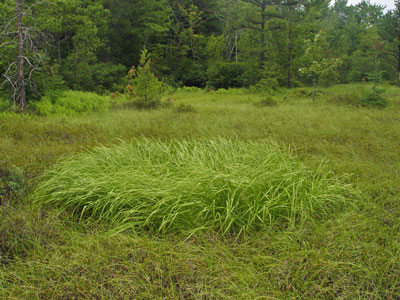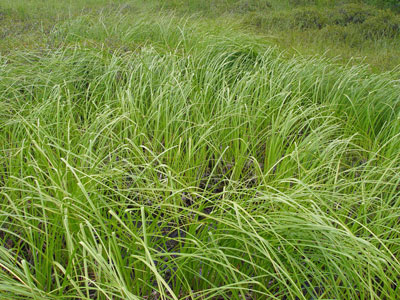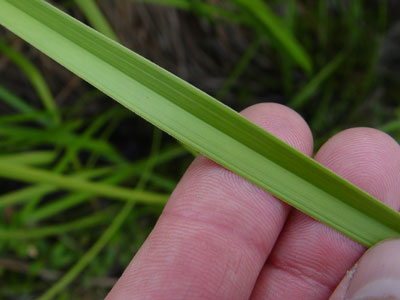DACF Home → Bureaus & Programs → Maine Natural Areas Program → Communities, Plants, and Animals → Rare Plants → Scirpus longii

Scirpus longii Fern.
Long's Bulrush
- State Rank: S2
- Global Rank: G3
- State Status: Threatened
Habitat: Meadows, swamps, and fresh marshes. [Open wetland, not coastal nor rivershore (non-forested, wetland)]
Range: Along the coastal plain, North Carolina and southern New Jersey, north to Massachusetts, disjunct in Maine and western Nova Scotia.
Aids to Identification: Bulrushes of the genus Scirpus are leafy-stemmed sedges with terminal inflorescences of numerous, small spikelets. The reduced flowers, which are subtended by narrow perianth bristles, mature into an achene (single-seed, dry, indehiscent fruit). Scirpus longii is closely related to members of the S. cyperinus complex, the wool-grasses. These get their name from the long, smooth perianth bristles give the spikelets a wooly appearence. When in fruit, S. longii is easily separated from other species. Its achenes are red to red-brown (vs. white to yellow-gray). The inflorescence is subtended by dark, glutinous-based leafy bracts (vs. pale to dark, non-glutinous bracts). Vegetatively, S. longii is identified by its long, stout rhizomes and vase-like growth of leaves. Identification of this sedge is difficult unless it is in flower, and it usually only flowers after exposure to fire.

Ecological characteristics: In Maine, this species typically grows in sedge-dominated acidic fens. It rarely produces flowering and fruiting stems; flowering appears to be triggered by fire or drought.
Phenology: Fruits June.
Family: Cyperaceae
Synonyms: None noted.
Known Distribution in Maine: This rare plant has been documented from a total of 4 town(s) in the following county(ies): Oxford, York.

Reason(s) for rarity: At northern limit of range.
Conservation considerations: Maintain hydrologic integrity of its fen (usually lakeshore fen) habitat, including natural fluctuations.
For more information, see the Native Plant Trust's Conservation Plan for Scirpus longii.